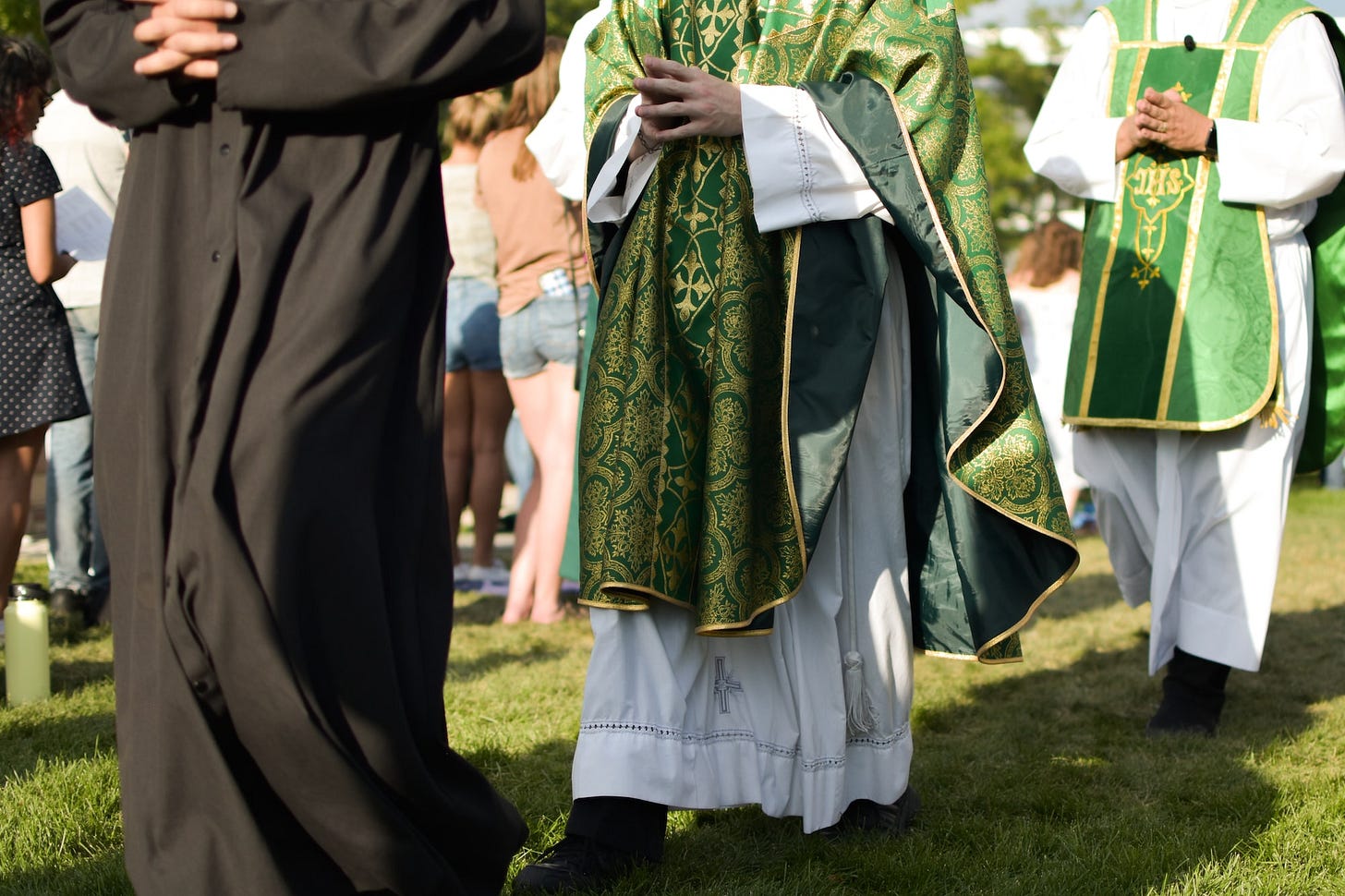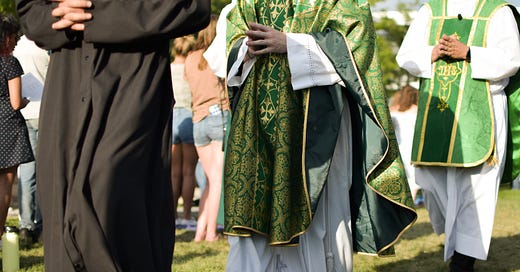
As Worcester bucks a trend, will US dioceses keep naming names?
A Massachusetts diocese has defended not publishing a list of accused clerics. Do they have a point?

The Diocese of Worcester, Massachusetts, issued on Friday an updated report on clerical sexual abuse in the diocese, going back to the 1950s.
In the wake of first the Spotlight scandals of the early 2000s and then the Pennsylvania grand jury report of 2018, reports like these have become common for U.S. dioceses to release, and become an accepted part of both the Church’s reckoning with its past, and the tracking of its progress.
But the Worcester report was different from most — not for what it included, but for what it didn’t.
Unlike other dioceses, Worcester did not include the names of clergy accused of historical acts of abuse, and it does not maintain a public list of “credibly accused” clergy.
Those decisions have drawn criticism for Bishop Robert McManus, who has insisted that declining to publish names does not mean the diocese is any less committed to an honest reckoning with the past, or to tending to the just needs of victim-survivors.
But the Worcester decision raises questions about how effective “naming names” of accused clergy is at restoring trust in dioceses — and how just the practice is.
—
The Worcester report, dated Jan 31 but released Feb. 3, is an updated version of a similar study conducted in 2004. It summarizes and presents accusations of sexual abuse of minors in the diocese going back to 1950 — the year the Diocese of Worcester was created.
It records 209 separate accusations of abuse, 173 of which it says were “credible”, 28 “unsubstantiated”, and 8 either false or withdrawn. McManus, who became bishop of the diocese in 2004, wrote in the report that he is “profoundly sorry” for every instance of abuse and remained committed to stamping it out.
While the report explained that the “credible” accusations were spread across a total of 54 accused clergy, the bishop defended his decision to not name the priests involved.
“I have been asked over the years why our diocese does not publish a list of accused priests as do some other dioceses in the country,” McManus said. “I am convinced a single list will not accurately reflect the various concerns and outcomes.”
“There is no other precedent for the publishing of lists of the accused in society - even of those accused in other positions of trust such as medicine, education or law enforcement,” the bishop said.
“Such lists can be a cause for deep division among many members of our Church who see this as publicly branding as guilty those who never have been charged by law enforcement or had a chance to defend themselves in a court of law,” wrote McManus, who also pointed out that decades had often passed after incidents of alleged abuse before an allegation was made, by which time, in some cases, the accused cleric was deceased.
Moreover, the bishop said, not publishing a central list of accused clerics doesn’t mean the diocese doesn’t publicize the names of accused clergy on an individual basis — on the contrary, the diocese publishes and distributes information on every priest taken out of ministry due to a credible allegation of sexual abuse.
McManus’ concerns about central “credibly accused” lists echo similar warning from the Vatican, which has - for years - quietly pushed back on the practice, and publicly told dioceses to refrain from using terms “credible” and “substantiated” to described allegations which have not yet been subject to a canonical or civil legal process, and when clerics have not had the opportunity to defend themselves.
Critics of the practice of publishing lists of names of accused clerics have also warned that when an accusation isn’t proven, the fact that a priest’s name has been on a list at all can make it difficult - sometimes impossible - for the bishop to return him to pastoral ministry, creating a class of “unassignable” priests who haven’t been found guilty of anything, but cannot move on with their lives.
In New Orleans, a bankruptcy judge ordered the archdiocese to cease paying stipends to clerics on the public “credibly accused” list in 2020, and last year extended the order to those whose accusations weren’t deemed “credible” — even if those priests hadn’t undergone any kind of canonical process at all.
But others insist that naming names of accused clergy is an essential part of recognizing the suffering of survivors. While publishing the name of a deceased cleric might seem unfair, they argue, it’s often the closest to justice their victims can get.
Some survivors’ advocates also argue that a list of “credibly accused” clergy from the diocese can help victims come forward — seeing the name of their abuser on a diocesan list can give them confidence that they will be taken seriously, they say, and assure them that they are not alone.
And while there might be good reasons to pause before naming, for example, the 22 priests who were each accused in Worcester of a single allegation, the singular cleric with a total of 17 separate accusations would strike many as a different matter.
Those arguments deserve to be taken seriously.
📰
On the other hand, there are not obvious signs that the Worcester decision not to name names has hindered progress in combating abuse: according to the report, more than 95% of the accusations concern the decades before 1990, and only one accusation of abuse has been reported in the diocese since 1998 — suggesting that real progress in stamping out child abuse in the diocese has been made.
But in addition to the questions raised by lists of “credibly accused” about the right of defense and the presumption of innocence for clergy, some observers say that published lists might also present problems for victims-survivors, too.
In cases where the accused priest is still alive or even in ministry, some canonists have argued survivors might find their expectations inflated if dioceses term their accounts “credible” or even “substantiated” before any formal investigation or canonical process has begun.
Even in cases when accusations cannot be proven, there might be enough evidence to warrant some action against a priest, perhaps involving supervision or even some sort of restricted ministry.
But in those cases, the canonical process is unlikely to end in the kind of definitive result many survivors expect - usually laicization - and, some argue, that can fuel a sense of frustration and confusion about how the Church is handling complaints.
For the moment, Worcester is one of 14 U.S. dioceses which have chosen not to issue “credibly accused” lists. And they will likely continue to come under fire from some quarters for failing to do so, while others will continue to criticize the practice as a denial of due process for the priests involved.
While that debate is unlikely to go away in the immediate future, a resolution will eventually need to be found.
Reports from all parts of the country, including the U.S. bishops’ conference, continue to record a steady decline in the number of historical cases being reported for the first time. And contemporary accusations of clerical abuse of minors are, thankfully, increasingly rare — even if they are no less horrific when they do occur.
But even if these trends continue, dioceses across the country are reckoning with a new reality — the rising awareness of cases of abuse against “vulnerable adults,” a category redefined by Pope Francis to potentially include anyone in a spiritual relationship with a cleric, or even aware of their clerical status, at least according to some interpretations.
At present, even dioceses which maintain up-to-date public registers of clerics “credibly” accused of abuse of minors have not broadened their lists to include those accused of abuse of adults.




